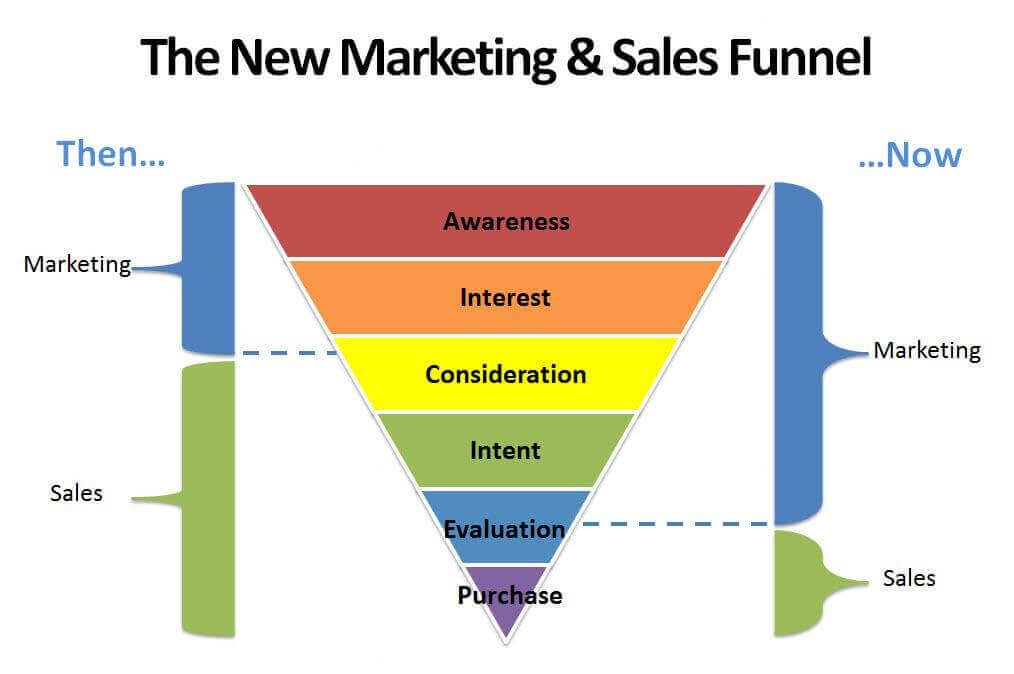 It wasn’t that long ago when, as a salesperson, you had a lot of influence over the buyer’s decision making process. A salesperson could dictate what the buyer knew and could change the conversation to what would be in favor of their company. They also got into the conversation much earlier. It was a good time to be a sales person. But as a consumer it was much different.
It wasn’t that long ago when, as a salesperson, you had a lot of influence over the buyer’s decision making process. A salesperson could dictate what the buyer knew and could change the conversation to what would be in favor of their company. They also got into the conversation much earlier. It was a good time to be a sales person. But as a consumer it was much different.
Those days are over.
Today a salesperson gets to speak to a decision maker much later. The buyer is educated, influenced by a number of factors, and may have already formed a decision before you ever get to see them. This is how the Internet has changed sales and marketing.
If you’re looking for a reference on how to make your company function better in today’s sales and marketing world, this isn’t your reference. For that I suggest downloading the guide at the bottom of the page. It’s an in depth look at how to merge the two departments into a business development machine.
How the Internet has Changed Sales
If you’re over the age of 30 you probably remember a time when you could walk into a business, they’d never heard of you, but needed your service so they would at least speak with you. You could use your marketing materials to take them from awareness to interest in a first encounter. Cold calling was a sales activity, but it worked for your marketing department just as well.
I remember canvassing the streets of Lansing selling telecom services and getting face to face with a business usually netted me 2 or 3 meetings a week. It was a slug fest but it worked.
Now flash forward to today, cold calling is a dead activity, and canvasing is left for political races. The buyer is coming to you. They’re researching you online, checking reviews, and discussing you on social media. They’ve already interviewed you before you knew they were interested. The pendulum of power has shifted away from a salesperson to the consumer. This is a good thing for sales people.
Why, you may ask? Because if marketing is doing their job you don’t waste your time chasing leads that haven’t been nurtured. Your closing rate should be going up, and your sales cycle going down. When the consumer has the power they don’t feel like you’re selling to them. They feel like they’re buying from you.
How the Internet has Changed Marketing
Digital marketing, and digitizing offline marketing is the best thing that ever happened to the marketing department since, well, ever. The amount of data you can collect on huge swaths of people or individuals is incredible.
It also means that your job is a lot harder because everyone has that data and can change rapidly too. Mix this with Google and social media’s ever changing algorithms, and the power of consumer knowledge, you get a power struggle unmatched in marketing history.
The Internet has also kept the marketing department in the conversation longer. Nurturing leads through trickle email campaigns and remarketing to stay top of mind while people work through the buying process are just two ways marketing is doing a job that sales used to do.
This is, however, really good news. Marketers can track buyer’s behavior and actions longer into the process and create more qualified leads for the sales team. They are also able to stay on brand when the marketing continues. Email campaigns that were once “Just checking in” emails from a sales person are now targeted content based on behaviors. To quote Martha Stewart, “it’s a good thing.”
For the Times, They Are A-Changin’…
The image of the funnel up at the top is probably going to change even more over time. Sales will be entering the picture further and further down the funnel. Sales cycles will get shorter and shorter, and closing rates will go up. Because as buyers demand more and more data to research before making a purchase, and in return give up more and more of theirs; we’ll all know everything but blood type before the sales person is asked to come visit. The Internet has changed sales and marketing and I believe it’s for the better.
This may sound like a scary proposition for sales people, but it’s not. You just need to help your marketing team know what you know. To learn more about how to that, download the guide.





